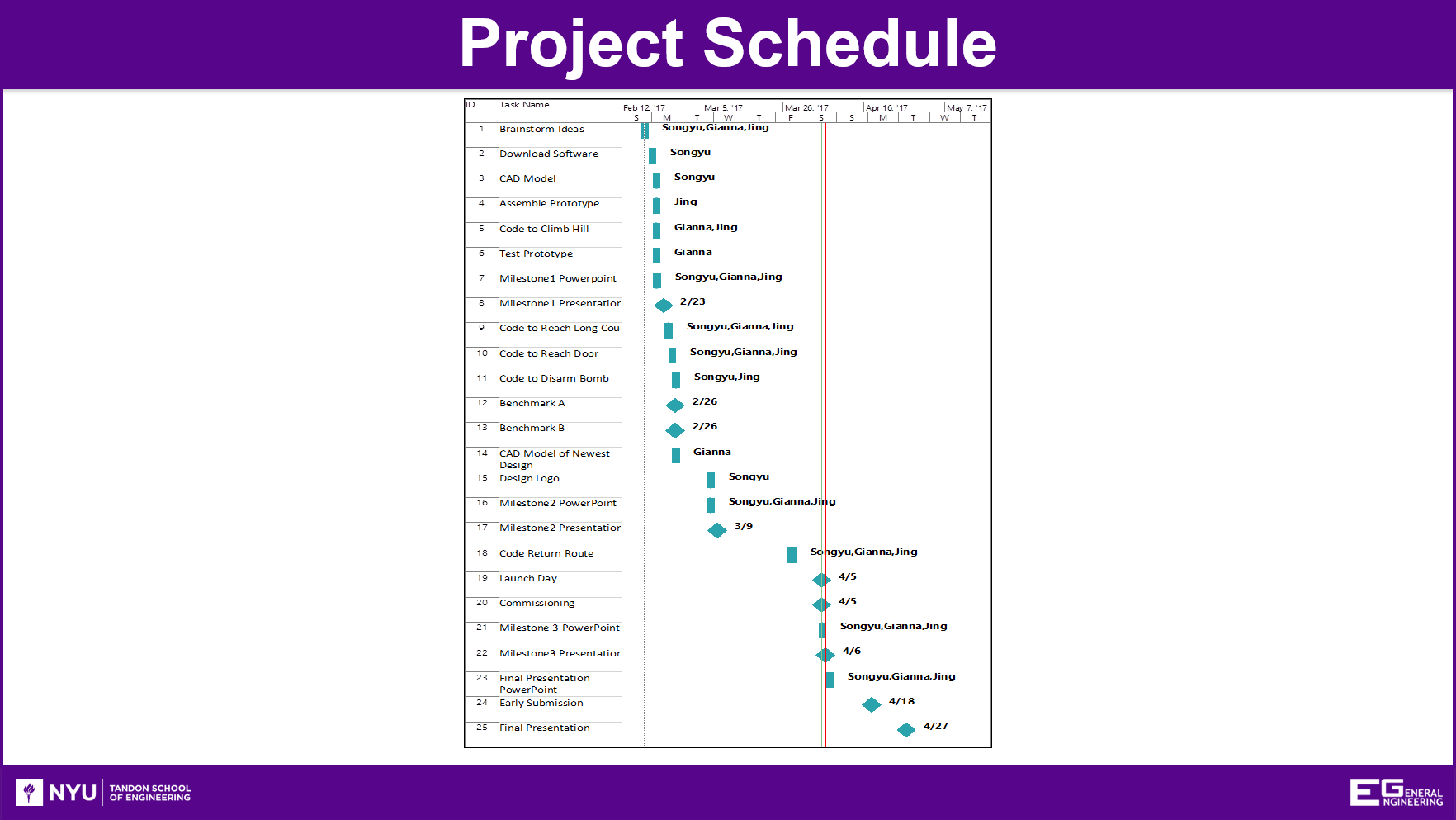Robot Design Project (2017)
For engineering major students in NYU tandon, classes such as engineering design (EG1003) and innovation and technology forum (EG1001) were required courses. Both classes encourage students to get creative with engineering projects and ideas, mainly by looking at problems and finding solutions for it...as simple as that.EG1001 featured weekly workshops and lectures, both led by professors in the university and guests. One of the guests lecturer was Mick Ebeling, the founder and CEO of Not Impossible Labs. Weekly workshops included brainstorming with a group of 3 or 4, and one of the activities that students found engaging was listing "stupid" ideas. Some of the "bad" ideas are:
Cigarettes for children
On-the-spot recycling trucks
Pest attracting spray
Desktop computer that could only do basic low-digit addition
Glasses that blur when worn
EG1003, on the other hand, focused more on the engineering process. It involves making goals, meeting benchmarks and deadlines with a group of people. The activities include weekly labs that requires creating vehicles or machines within a given timeframe and a limited amount of materials. This class is heavy on semester projects and group presentations: the class recitation is a time dedicated each week for a group presentation of the previous week's lab, and the semester project is an on-going process of troubleshooting and reporting on a robot design. Each week, I had lab experiments with a group, of which we made write-ups and presentations. Some of the labs are competitions for extra credit. The list of labs is as follows:
Lab 6 — Model Shop Session
Lab 9 — Model Shop Session
My group chose the bomb disarming robot (BDR) project for the semester-long design project, which requires a Lego Mindstorms vehicle to run autonomously on a course, setting off "bombs" and avoiding obstacles and decoys.For our milestones or benchmarks, we met goals and created presentations to show our progress to the class. Here's an example of requirements for a milestone, taken from the class's website.Milestone 3 Deliverables:
Presentation:
Project description
Design approach
Design changes since Milestone 2
Mission statement
CAD drawings: top, front, most detailed side, isometric, gear train
Mindstorms program
Cost estimate (previous and current). What changes were made?
MS Project schedule (previous and current). What changes were made?
Progress update: current state of the project (time, budget, etc.)
The following slideshow features excerpts of the powerpoint file for the semester final presentation. It includes photos of the course, CAD drawings of the robot, a cost estimate, a sample Lego Mindstorms code, and a Gantt chart.






Results
The robot was able to get to the goal, disarm the bomb, avoid decoys, and stay on track. The robot did not fall off and was able to retrace back to the start, from the finish. It went up the ramp (and down on its way back) and avoided falling off due to asymmetry and changes in the terrain, all without human intervention.
Me and my groupmates learned a lot about project development. We learned a lot about giving presentations, making task schedules, coordinating tasks and project updates with collaborators, basic modeling with a CAD software, brainstorming and prototyping efficiently. Most importantly, we learned about team building and taking initiative while still letting others take part.


